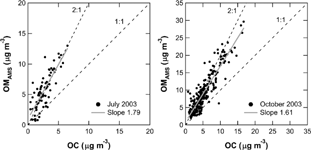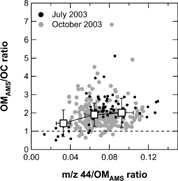Figures & data
TABLE 1 Summary of intercomparison periods
FIG. 1 Schematic diagram of the Aerodyne Aerosol Mass Spectrometer (AMS) and the sampling system for ambient measurements.
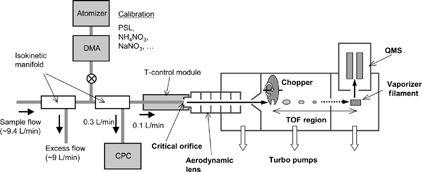
FIG. 2 Time series of (a) the air beam (AB) signal and (b) the ratio of the ionization efficiency for nitrate (IE NO 3 ) to the AB signal. The AB data are 12-h averages. The solid line and dashed line in b indicate the average and 2σ variability range of the IE NO 3 /AB ratios, respectively.
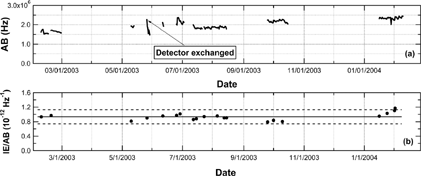
FIG. 3 Time series of the background signal at m/z = 30 (NO+) in the AMS mass spectra and nitrate mass loadings in ambient air. The data are 12-h averages.
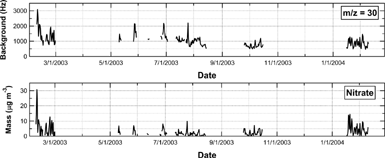
TABLE 2 Limits of Detection (LODs) for AMS measurements (1-h average)
FIG. 4 Scatter plot of measured and predicted NH4 + derived from the PM1 PILS-IC measurements in May (open circles) and July (solid circles) 2003. The data are 1-h averages. The predicted NH4 + was determined assuming that measured anions (SO4 2 −, NO3 −, and nss-Cl−) were fully neutralized by NH4 +. The dot-dashed line indicates 1:1 correspondence line.
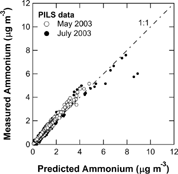
FIG. 5 Scatter plots of AMS versus PM1 PILS measurements in May (open circles) and July (solid circles) 2003. The data are 1-h averages. The dashed and solid lines represent the linear regression lines for May and July 2003, respectively. Note that CE = 0.5 is assumed for all of the AMS inorganic species. The dot-dashed line indicates 1:1 correspondence line.
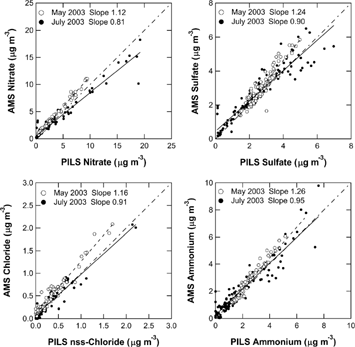
TABLE 3 Summary of intercomparison results
FIG. 6 Monthly average size distribution of nitrate (solid line), sulfate (dashed line), and organics (shaded line) for July 2003.

